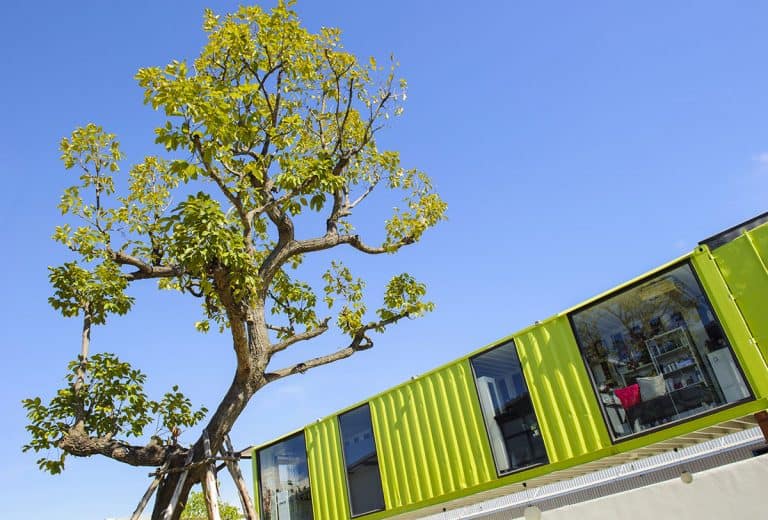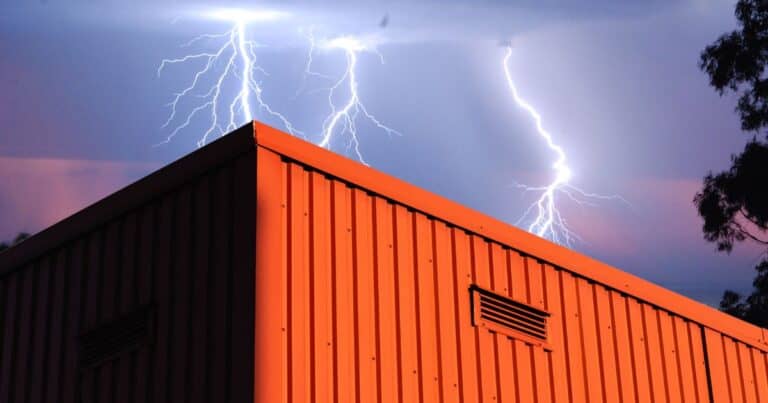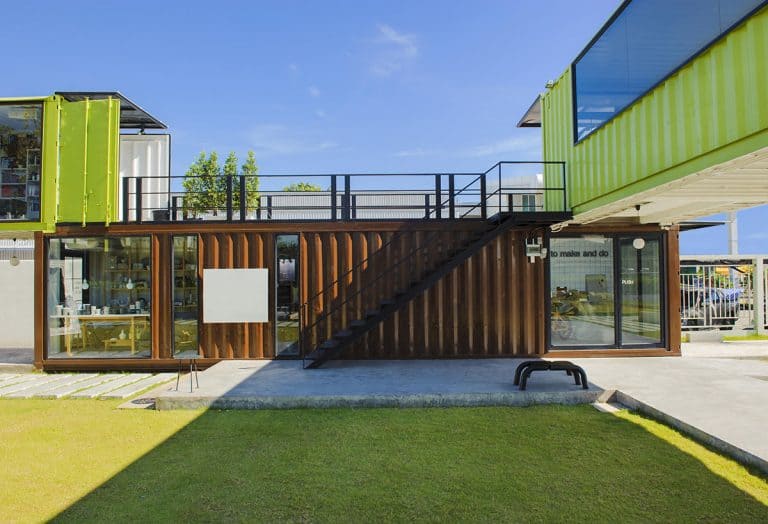Container Home Buying | What You Need to Know
Are you looking for a new home? Do you want to live in an affordable, sustainable way? If so, then a container home might be the perfect solution. Container homes are made out of recycled shipping containers that have been converted into livable spaces. These alternative living spaces come with all the amenities of your average house and can be customized almost any way you like.
Buying a container home can seem like an intimidating process, but it doesn’t have to be. In this article, we are going to discuss every step you need to go through when buying container homes. We will cover how to find the right builders, how to set up a budget, and what you need to know before construction.
If you follow these six steps, you’ll be well on your way to owning the perfect shipping container home for you.
1. Consider Your Housing Needs
Before you you do anything else, it’s important to consider your needs. For example, if you’re single and living alone, then a smaller house might work better for your lifestyle than an oversized one. However, if you’re a couple with kids or pets, then it might be better to consider a larger unit.
Ask yourself these questions:
- Do I intend to use the container home as a primary residence or vacation property?
- Where should the container home be located?
- Are there any zoning restrictions that will limit my container home options, and will I be able to get the necessary permits? In case of regulatory limitations, should I build a different type of house or buy a different plot of land?
- How many people will live in the container home? What is the minimum square footage I need? What would be the optimal size for my family?
- What features do you need to add (e.g., an attached garage or extra bedroom)?
- Are you primarily looking for an affordable home, or do other factors matter more than the price? Such as design and location?
Write your needs down in a list and refer to them when choosing your next steps. Remember to consider your future needs. Are you married? Do you plan on having kids in the future? Consider that a tiny container home will be cheaper to buy but may also be harder to sell in the future.
You should also decide how soon you need to move into the container home. What are your preferences when it comes to the construction time frame and design process? Consider how long it should take to build the container home – including the probability of weather-related delays or other unexpected setbacks. Some container homes take only two weeks to construct, while others may take nearly a year. Shorter timelines may not include some minor finishing touches such as trim, connecting utilities, and interior painting.
2. Set up a Budget
Before you start looking for container home builders, you should have a budget set up. A good place to start is by listing how much you’re willing to spend on your home.
A good construction budget should include a down payment, closing costs, and all the money needed to get your home built. You want to be able to buy the size and type of home that suits your needs while staying within your price range.
You should also plan on having enough funds set aside for additional expenses such as furniture, appliances, and landscaping costs. Keep in mind that where you live will affect how many of these budget items you’ll need – if you’re moving from an urban area to a remote property, you’ll probably need to invest in more furniture and appliances.
You should also consider the cost of moving your container home to its final destination, and how much time you have before you can move in. Will you need to rent a storage unit to hold your belongings? Do you need to rent a temporary place to live while your new home is being built?
The budget should be broken down by category (e.g., construction, permits, remodeling, furnishing, landscaping, etc.) and then estimated for each category. It should be as detailed and accurate as possible so that you don’t get surprised by any additional costs.
Finally, once you’ve calculated what’s possible within your budget, make sure to budget for emergencies and unexpected expenses – at least 10% of the total budget. There are many things that could go wrong when buying or building any house, so it’s best to have some money in reserve in case of unexpected construction cost overruns or unforeseen delays due to weather conditions.
How much does it cost to build a container home?
The typical price for a 2,000 square foot container home is $140 per square foot, including labor. The price depends on how much customization is done and the type of container used.
Building with shipping containers can be cheaper than traditional building methods because the materials are cheaper, but this doesn’t mean container houses are inexpensive – in fact, they tend to be relatively expensive when compared to homes built using other materials like wood or brick.
The cost of a container home is determined by many factors. The size, design, and amount of customization all play an important role in how much it costs to build one. For example, if you want more windows or thicker insulation for better heating efficiency, that will affect your budget significantly.
However, the main reason container homes are expensive is that they require specialized labor and customization. Few people have ever built one and experienced craftsmen are less readily available and in high demand.
One way to keep the cost of labor down is to use a more basic design, which minimizes the time spent building and designing it. This is great if all you need is an affordable home that can be built in less time, but the trade-off is that it will be less individualistic. Another way to lower the costs of labor is to do some of the work yourself. This is a great way to save some money and have the satisfaction of putting it together yourself.
If you are careful with the planning and execution, you can save thousands of dollars in labor costs.
3. Consider Your Involvement During Construction
Building any home, including a shipping container home, is a lot of work. It’s important that you consider how involved you want to be in the process.
Building your own container home is a time-consuming and laborious process, but it’s also possible to outsource most of the tasks, so all that is needed from you are the final decisions. This will be noticeably more expensive than doing more of the work yourself, but it will likely be less stressful and save you time to do other things.
Prefabricated Container Houses
The simplest option is to buy a pre-made container home that will have been put together by professionals and shipped to your site, but this also means you are paying for everything to be done, and there are few opportunities to customize the house.
Prefabricated container houses are also relatively small as they need to be transported by truck, but they are often less expensive and can be made to fit any size plot. You can also buy larger homes that are partly prefabricated and then assembled on-site.
Site-built Container Houses
Another option is to buy a site-built container home, which will be put together on your land and you can design it to suit your tastes. This type of house is usually the most expensive as they are more labor-intensive, and they will usually require more involvement on your part. You will have to design the house or at least consult with architects and engineers on how to make it safe and suitable for your needs.
Building Permits and Red Tape
Regardless of which building method you choose, you will also have to get a building permit and other necessary permissions. And you will also need to have utilities connected. All of this involves coordination and planning, which you can do yourself or hire professionals to do for you.
The more you are able and willing to do for yourself, the more you will save on costs.
4. Find the Right Builders
The next step is to do your research and compare different container home builders.
This can be a time-consuming process, but it will be worth the effort. When you are researching companies, look for ones that have been in business for several years, which means they’re more likely to stand by their products and offer quality service.
You should also find out how long their projects take so you know what to expect when browsing through plans or talking with contractors about an estimate of the cost. If you’re on a tight timeline, then it’s important to find a company that can deliver and set up your container home within the timeframe without sacrificing quality. You may have to pay extra if you need the home delivered and installed in a short period of time.
An important consideration when deciding who should build your container home is to what degree you want to be involved in the process.
Some companies allow homeowners to choose their own materials and have a say in how everything is put together. Other builders offer fairly standard solutions that may be more affordable but are less open to input from you due to the lack of customization options.
Container home builders who offer more customized options typically charge a higher price for their services, so you’ll need to find a balance between features you want and affordability.
When you are about to make a decision, talk with other people who have bought from this company before committing to anything. You should also check out their reputation by reading reviews and examining their licensing. Check with the Better Business Bureau to see if the builder is involved in any disputes.
5. Talk with the Builder about Delivery Options and Set Dates
When you have found a builder you are convinced will be an excellent fit for your project, you should talk with them about delivery options and set dates.
Talk to the builder in person or by phone as soon as possible so that you can discuss any specific needs beyond those of standard container homes.
Depending on the size and number of containers, delivery costs can be a noticeable part of your budget for your new container home. Make sure you know how much this will cost, so you don’t get surprised down the line with additional expenses or delays in construction schedules.
The builder should also provide information about how long it would take them to prefabricate the containers before they are delivered to the site.
Another important consideration when it comes to container homes is the surrounding infrastructure. Make sure you know what kind of amenities will be in place, as well as how easy they’ll be to access from your new property.
If you have hired a project manager, ensure they facilitate communication between the builder and the municipal authorities to assure that all requirements are met, and your building project is approved.
Make sure you speak candidly about any potential problems such as water connection or other considerations and make them aware sooner rather than later to avoid wasting resources down the line. You should also ask for a clear statement of all the terms and conditions, as well as any possible penalties for breaching them.
Buying a container home is not something to be taken lightly – make sure you do your preparations first. It’s better to be safe than sorry.
6. Close the Deal and Start Building
Finally, once you are satisfied with the terms and conditions, go ahead and sign your contract. Now construction can begin.
You should be in contact with the project manager or building company regularly to make sure they are on schedule. You may need to pay an additional fee, for example, a deposit or advance payment when you sign your contract, and this will depend on the terms of your agreement.
Once your new container home is almost complete, your utilities will be connected and the building company will hand over a certificate of occupancy. After a quick process, you will receive the keys to your brand new shipping container house.





